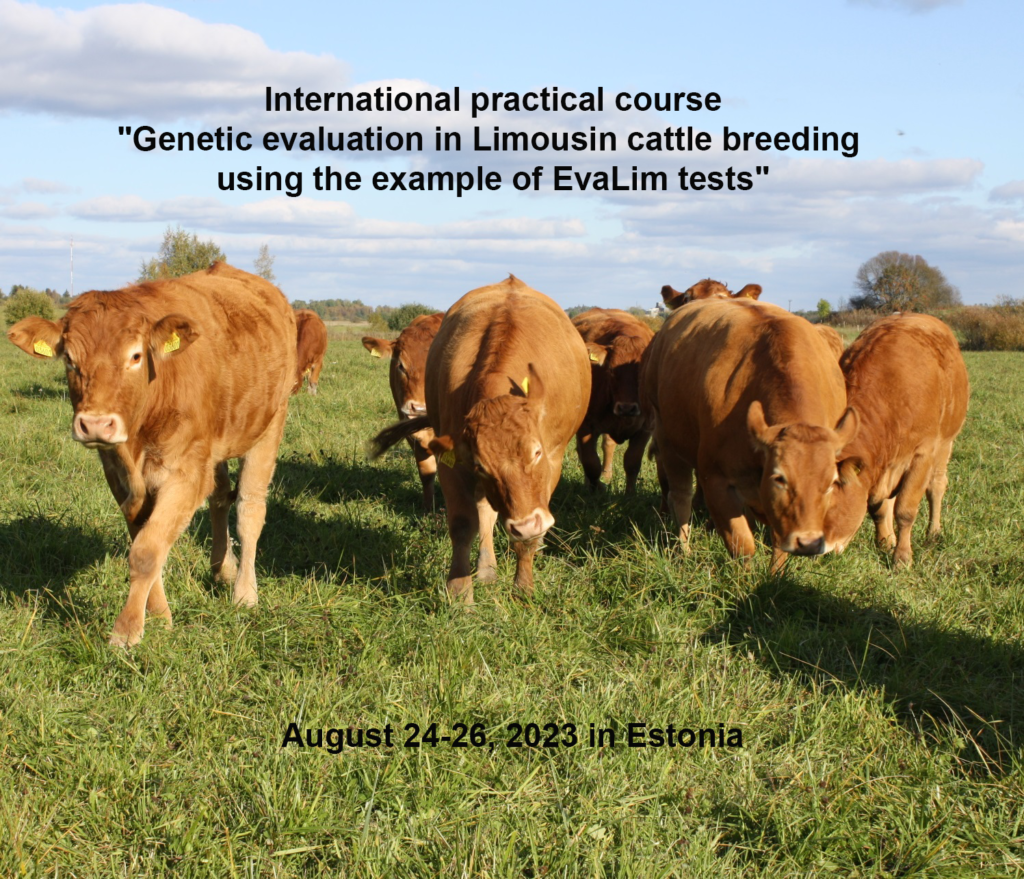Two words sum up our general breeding direction: grass-fed Limousin. We love combination of limousine cattle and nice green pastures. From experience, we have also realized that meat grown only on grass fodder is still tastier, quite honestly right away. Fortunately, there are still plenty of grasslands in Estonia.
A special feature of our herd is that many of our main herd cows have been bred from EHF dairy cows over the years. Is it a strength or a weakness – we don’t know yet – but we hope it’s a strength.
For us, the most important thing in breeding is:
- Temperament. The longer you work in the field, the higher the bar is set in this regard. Animals whose temperament seemed perfectly normal 10 years ago would no longer find a place in our herd today. Know if we are getting old…
- Pregnancy and calving interval, or fertility in general. If the calving interval of a suckling cow extends significantly beyond 365 days without reason, this is in any case an argument for removing her from breeding. An effective production process starts with the conception of the animals at the desired time.
- Calving ease and calving ability of offspring. Breeders can only get paid for their work through the birth of a viable calf, and it is important to find a balance in breeding between the direct calving ease and the calving ability of the offspring. Having achieved great results in the first, we may be in big trouble with the second in the next generation. So – balance.
- Dairy based on grass fodder. The most important quality of a nursing cow, apart from pregnancy and calving ability, is that she has enough milk to provide the calf with enough milk to grow. In the conditions of our large grassland resource, it is vital that the grazing period is used to the maximum and that the cow “brings home as many calve`s kg as possible from the pasture” – this is always the cheapest increase. This is also important because in the breeding of limousines as a whole, the indicator of milk yield has tended to take a back seat.
- Skeletal quality. The appearance of an animal is not just a matter of eye candy, but many functional indicators depend on it – from calving ability to slaughter results. So appearance is important.
- Growth based on grass fodder. The selection of our young animals is based on grass feed. This means that before the decision is made whether to use or sell the animal as a breeding animal, it will not receive additional feed. With this, we select animals based on performance indicators that achieve the best results through the mother’s milk yield and the assimilation of grass fodder. This does not in any way mean a disapproving attitude towards supplementary feeding – we just want to know who are best suited for breeding/keeping on a grass-only basis. Of course, being successful also requires investing in the establishment of pastures, their maintenance and the stocking of high-quality fodder. And those who are directed to the fattening group must also get fattened!
From the above, we can draw a conclusion about our breeding priorities that we want to be strong in – these are future suckler cows and breeding bulls suitable for the reproduction of suckler cows. Here we hope to shape our work and experience into a high-quality product. The Limousin breed is widely used in the world as a terminal sire, which brings good growth rate and fleshiness. It is important to understand that, as a rule, you cannot do many things at once: bulls that are excellent finishing bulls are most likely not suitable for breeding bulls, and vice versa.
Of course, people familiar with breeding shake their heads – we have chosen the most difficult part of beef cattle breeding. Fleshness and growth rate are characteristics that are passed on to the offspring very easily – already with the first generation. However, it is different when it comes to indicators of maternal qualities (which are important to us) – they are difficult to achieve and also difficult to maintain.

